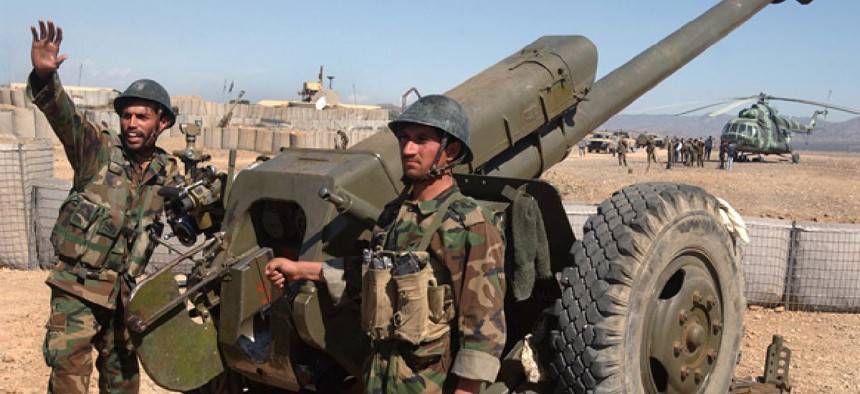Pentagon: Even ‘independent’ Afghan battalions still rely on NATO
The coalitions Afghanistan exit strategy depends on capable local forces.
The U.S.-led coalition’s day-to-day commander in Afghanistan said that “a very low number” of Afghan battalions are able to operate independently in the country--and even those still rely on coalition partners for logistical, medical, and maintenance support.
Lt. Gen. Curtis Scaparrotti, the No. 2 ranking officer in Afghanistan who heads the coalition's Joint Command, told Pentagon reporters on Wednesday that only 29 battalions in the Afghan national army and seven in the Afghan national police meet the “highest rating” to operate independently. The United States still provides advisory groups and “enablers” for their missions.
This is “a relatively small number for that large of an army or a police,” Scaparrotti said, estimating this was about 1 percent of the total force. “To be honest with you, it’s a very low number.”
The coalition's exit strategy for Afghanistan depends on building Afghan army and police forces capable of battling the Taliban and holding areas of the country that NATO forces have cleared of militants; Washington has spent more than $27 billion to train and equip Afghan security personnel since 2002. Defense Secretary Leon Panetta made headlines recently by revealing that the U.S. hopes Afghanistan's local security forces will be ready to take the combat lead in the country sometime next year--and that American troops would be able to transition to a training, advice, and assist role by the mid- to latter part of 2013.
Scaparrotti said he's encouraged by another 42 percent of local security forces currently operating with more-minimal coalition support. “That has been growing,” he said. “That’s half your force, nearly, that’s effective with advisers. So they can operate, they need our enablers, they need some advisory to help them.”
Scaparrotti said he is pressing his commanders to put local security forces in the lead for operations “as soon as they can.”
“The earlier we get them in the lead, the better we have a metric of just how well they’re doing,” he said. “We also know better how to improve them. And I want to do that while we have more forces on the ground in order to help develop them.” The United States plans to withdraw the remainder of the 33,000 surge troops from Afghanistan no later than next September, leaving around 68,000 U.S. troops in the country next fall.
At this point, about 30 percent of the operations carried out by the American-led coalition are run by a patrol of Afghans, Scaparrotti said. “They may have a coalition force with them enabling them, but they're in the lead,” he said. “We do have a number of forces now that are stepping out into the lead, choosing to do their own planning, informing our forces and going out,” Scaparrotti said. “So it's building. But I would say it's early stages, to be frank with you.”
In September, the then-commander of NATO's training mission, Lt. Gen. William Caldwell, said that only two Afghan national army battalions--out of about 180--are operating independently without coalition support. The U.S. has not yet developed the logistics, maintenance, or medical systems of the Afghan security forces, Caldwell said at the time. “This is the year where we really start taking that on.”
NEXT STORY: State Department to downsize presence in Iraq








